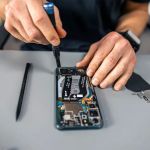How to Set Up USB Boot on an Old Laptop: A Step-by-Step Guide
- Step 1: Check Your Laptop's Compatibility
- Step 2: Create a Bootable USB Drive
- Step 3: Access the BIOS Settings
- Step 4: Set USB Boot as Priority
- Step 5: Boot from the USB Drive
- Case Study: How a USB Boot Revived an Old Laptop
1. Step 1: Check Your Laptop's Compatibility
The first step in setting up USB boot on your old laptop is ensuring that your device supports booting from a USB drive. Most modern laptops support USB booting, but older models might not. To verify this, check your laptop's manual or try accessing the BIOS. If you don't see options related to booting from USB, you may need to upgrade your laptop's BIOS or use a different method.
Once confirmed, you can proceed to create a bootable USB drive and adjust your BIOS settings accordingly.
2. Step 2: Create a Bootable USB Drive
To boot from a USB drive, you'll first need to create a bootable USB drive. This can be done with a few simple tools:
- Windows: You can use the "Rufus" tool to create a bootable USB with Windows installation files or a Linux distribution.
- Linux: Use "Startup Disk Creator" or the "dd" command to create a bootable USB drive.
- Mac: On a Mac, you can use the "Terminal" app along with "Disk Utility" to prepare your bootable USB drive.
Ensure that the USB drive is at least 8GB in size and formatted properly to match the operating system you plan to install. Once you’ve created the bootable USB, move on to the next step.
3. Step 3: Access the BIOS Settings
To set up USB boot, you’ll need to access the BIOS (Basic Input/Output System) settings on your old laptop. This is typically done by pressing a specific key (often F2, Esc, or Del) when you power on the device.
Once in the BIOS, navigate to the "Boot" or "Boot Order" menu. This menu lists the devices from which your laptop can boot, such as the hard drive, CD/DVD drive, and USB drive.
4. Step 4: Set USB Boot as Priority
In the BIOS, change the boot order so that the USB drive is set as the first option. This will instruct your laptop to try booting from the USB before attempting to boot from the internal hard drive. Save your changes and exit the BIOS settings. Your laptop is now ready to boot from the USB drive.
5. Step 5: Boot from the USB Drive
With your USB drive plugged in and the boot order set, restart your laptop. It should now attempt to boot from the USB. Depending on what you have on your bootable USB, you’ll either see a Windows installation screen or the start of a Linux operating system.
If everything works correctly, you’ll be able to use the USB boot method to either install a new operating system or run a live version of the operating system directly from the USB drive.
6. Case Study: How a USB Boot Revived an Old Laptop
One user was facing slow performance on their aging laptop running an outdated operating system. Rather than investing in a new laptop, they decided to try booting from a USB drive with a lightweight Linux distribution. After following the steps outlined above, their laptop was revived with significantly faster boot times and improved overall performance. Not only did this save them money, but it also gave the laptop a new life by running a modern operating system on older hardware.
Many users have successfully turned their old laptops into functional, high-performance machines by setting up USB booting. Whether you're looking to install a new operating system or run an efficient live OS, setting up USB boot can be a game-changer for your old laptop.
7. How to Get Started with USB Boot on Your Laptop
If you're interested in upgrading your laptop by setting up USB boot, visit Ninja Stik for the best USB drives and related tools to get started. You’ll find everything you need to create a bootable USB drive for a variety of operating systems, and expert guidance to ensure a smooth experience.




























